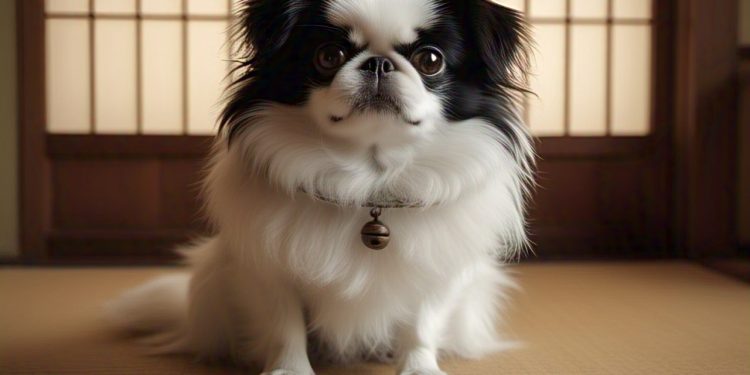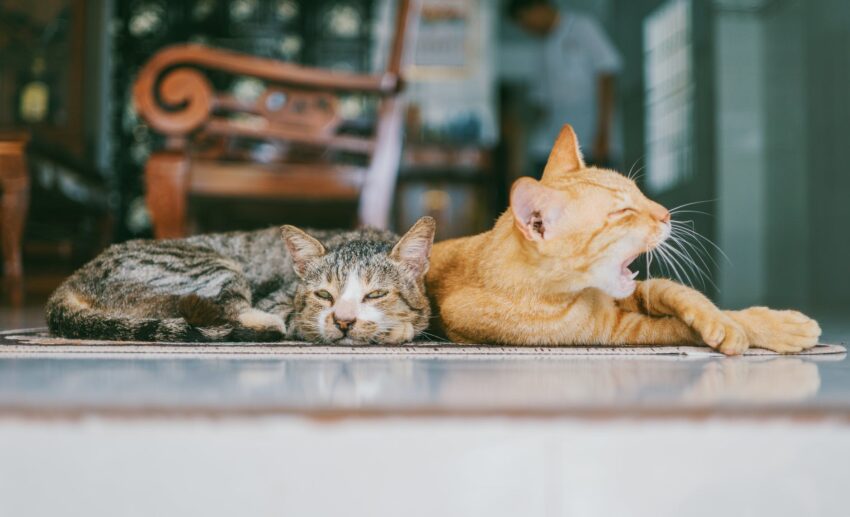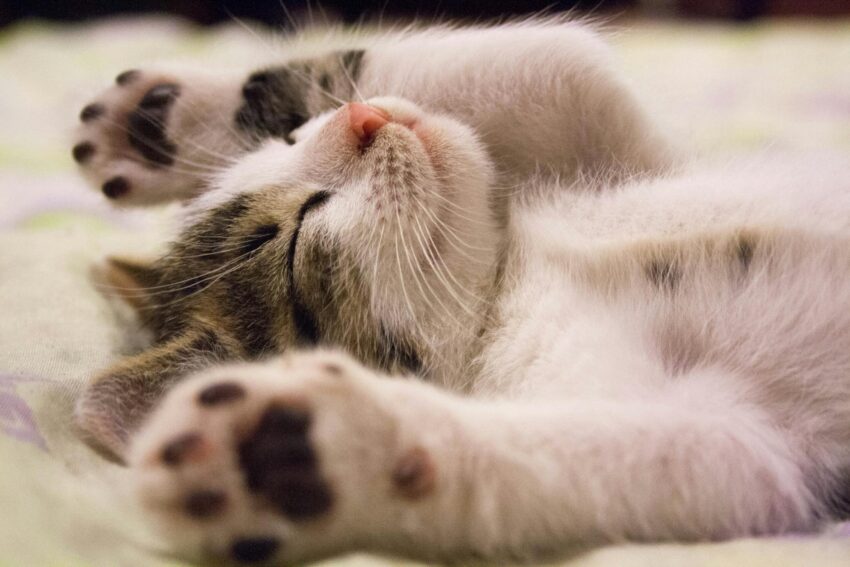The Japanese Chin is a small, elegant toy breed with a charming and unique appearance. Known for its silky coat, feathery tail, and regal demeanor, the Japanese Chin is not just a pretty face. This breed has a rich history and distinctive personality, making it a beloved companion for many pet owners.
Whether you’re considering adding a Japanese Chin to your family or just want to learn more about this delightful breed, this in-depth guide will provide everything you need to know:
- Origin and History of the Japanese Chin
- Appearance and Physical Traits
- Temperament and Personality
- Health and Lifespan
- Exercise and Training Needs
- Grooming and Care
- Choosing a Japanese Chin
Origin and History of the Japanese Chin
The Japanese Chin’s history is as captivating as its appearance. Although it is named for Japan, the breed is believed to have originated in China over 1,000 years ago. The breed was highly prized by Chinese royalty and was eventually introduced to Japan, where it became a favorite of the aristocracy.
Japanese Chin dogs were often seen as symbols of status and were pampered pets in noble households. They were also traded as gifts between royal families across East Asia. Despite their small size, Japanese Chins were valued for their agility and ability to entertain and offer companionship.
The breed was recognized by the American Kennel Club (AKC) in 1888 and continues to be adored as a companion dog around the world.
Appearance and Physical Traits
The Japanese Chin is a toy breed with a distinctive and graceful appearance. Here’s a detailed look at its physical traits:
- Size:
Japanese Chins typically weigh between 4-9 pounds and stand 8-11 inches tall at the shoulder. This makes them a small but sturdy breed. - Coat and Color:
They have a long, silky double coat that is feathered around the tail, legs, and chest. The coat can be black, white, red, or sable, and sometimes with unique markings, like a “mask” or “mantle” pattern. - Tail:
Their tail is feathered and carried high over the back in a distinctive curl. - Head and Face:
The Japanese Chin has a small, rounded head with a short muzzle. The eyes are large, dark, and expressive, giving them an alert and endearing look. - Ears:
The ears are feathered and held high, adding to the breed’s elegant and aristocratic appearance.
Temperament and Personality
Japanese Chins are known for their charming, affectionate nature. Though small in size, they possess a big personality. Here’s what you can expect from their temperament:
1.Affectionate & Loyal
Japanese Chins form strong bonds with their families and are typically very affectionate toward their owners. They are often described as lap dogs, enjoying cuddling and being the center of attention.
2.Independent yet Social
While they love being around their humans, Japanese Chins are also known for their independent streak. They’re not overly needy and are often content to entertain themselves when their owners are busy. However, they still thrive on companionship and do not like being left alone for long periods.
3.Confident & Alert
Despite their small stature, Japanese Chins are confident and can be quite alert. They’re excellent watchdogs and will alert their owners to any changes in their environment, although they are not aggressive. They tend to be more reserved with strangers but are generally friendly and polite once they are familiar with them.
4.Playful & Intelligent
Japanese Chins are often described as intelligent and playful. They enjoy playing games, but their attention span can be short, so quick, interactive activities work best.
5.Adaptable
This breed is highly adaptable and does well in a variety of living situations, from apartments to homes with yards. However, they prefer to be indoors with their family and are not suited for outdoor living.
Health and Lifespan
Common Health Issues
The Japanese Chin is generally a healthy breed, but like all dogs, they can be prone to certain health conditions. Some of the most common issues include:
- Patellar Luxation: This is a condition where the kneecap dislocates, which can cause discomfort or lameness.
- Heart Disease: Some Japanese Chins may develop heart conditions, especially as they age.
- Respiratory Issues: Due to their short muzzle (brachycephalic structure), they may be prone to breathing problems, particularly in hot or humid weather.
- Eye Problems: Japanese Chins are prone to eye infections and corneal ulcers due to their prominent eyes.
Lifespan
Japanese Chins typically live between 12-14 years, which is relatively long for a toy breed. Proper care, a healthy diet, and regular vet visits can help ensure your dog enjoys a long, happy life.
Exercise and Training Needs
Although they are small, Japanese Chins have moderate exercise needs.
Exercise Requirements
- Short Walks: A daily walk or two is sufficient for this breed.
- Playtime: They enjoy playtime indoors, especially games like fetch or hide and seek.
- Mental Stimulation: Due to their intelligence, they thrive on puzzle games and interactive toys that stimulate their minds.
Training
Japanese Chins are generally smart and eager to please, making them fairly easy to train. However, they can sometimes be a bit stubborn and may need a firm, patient trainer. Here are some training tips:
- Positive Reinforcement: Use treats and praise to encourage good behavior.
- Socialization: Early socialization with other pets and people is important to ensure that your Chin grows up to be a well-adjusted dog.
- Avoid Harsh Training: They respond better to gentle, reward-based methods rather than harsh or punitive training.
Grooming and Care
The Japanese Chin’s long coat requires regular grooming to keep it looking its best. Here’s how to care for your Chin’s coat and overall health:
Coat Care
- Brushing: Brush your dog’s coat at least 2-3 times a week to prevent tangles and mats.
- Bathing: Bathe your Japanese Chin every 3-4 weeks or as needed. Use a gentle, dog-safe shampoo to maintain their coat’s silky texture.
- Nail Trimming: Trim nails regularly to avoid discomfort or injury.
- Ear Cleaning: Clean their ears to prevent infections, especially since the breed has floppy ears that may trap moisture.
- Teeth Care: Dental hygiene is important—brush their teeth regularly or provide dental chews.
Other Health Maintenance
- Regular Vet Visits: Regular check-ups are essential to monitor for any potential health issues.
- Hydration: Always provide fresh, clean water to keep your dog hydrated.
Choosing a Japanese Chin
If you’re interested in adding a Japanese Chin to your family, here are a few tips to help you choose the right dog:
- Reputable Breeders: Find a breeder who is knowledgeable about the breed’s health and temperament and can provide a health guarantee for the puppy.
- Rescue Organizations: Consider adopting from a breed-specific rescue if you’re looking to give a dog a second chance.
- Compatibility: Make sure the Japanese Chin is a good fit for your home and lifestyle. This breed is ideal for those who are looking for a loving, low-maintenance companion.
Final Thoughts: Why the Japanese Chin Makes a Wonderful Pet
The Japanese Chin is a small, elegant, and affectionate dog that makes a great companion for families, singles, and seniors alike. With their charming personality, adaptability, and lovable nature, they’re perfect for those looking for a gentle lap dog with a dash of confidence and intelligence.
If you’re considering bringing a Japanese Chin into your life, be prepared for a loyal, playful friend who will enrich your home with love and laughter.














